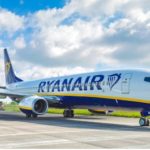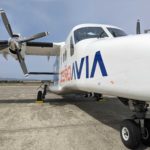The US Transportation Security Administration (TSA) has expanded its explosive detection team with a new dog joining the Richmond International Airport (RIC) department.
The canine team was trained at TSA’s canine training centre in San Antonio, Texas.
RIC’s new dog Hary is a five-year-old German Shepherd and he was trained for 12 weeks along with his partner as they learned to work together to detect explosives and explosive materials in the busy transportation environment.
The dog sniffs the air currents surrounding travelers and their belongings as they pass through the airport terminal in an effort to detect anyone who may be carrying explosives.
In doing so, the canine team assists with the efficiency and effectiveness of TSA’s screening operations.
Canines are an important layer in airport security because they increase TSA’s explosive detection capability. The procedures involve the increased use of the canines and the reconfiguration of checkpoint lines to allow for the passengers to walk past the dogs.
Added dog screening
This added screening measure enhances security and allows TSA to stay ahead of threats.
The team capably navigates among large groups of people to pinpoint the source of an explosive odor, even if the source is mobile and often without the source being aware it is being tracked.
Canine handlers are trained to read their dog’s change of behavior when it indicates an explosive scent has been detected.
If a dog alerts its handler to the presence of explosive odor, TSA follows an established procedure to resolve the alarm. The use of these highly-trained canines is an effective tool in deterring and detecting the introduction of explosive devices into the nation’s transportation systems.
Because explosives are known to be the greatest threat to the aviation system, canines are regularly tested to ensure they maintain a high standard of operational effectiveness.
Subscribe to the FINN weekly newsletter
You may also be interested in:
British Airways assists customer to take first flight in 15 years with service dog

